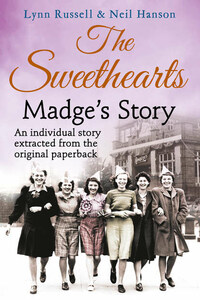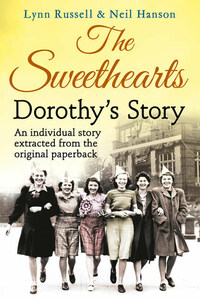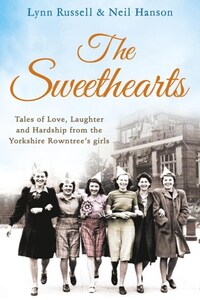Some places announce themselves by a distinctive smell in the air, long before the town or city itself is reached: the hoppy aroma of brewing from Burton, the lingering smell of the old fish docks in Grimsby, the sulphurous fire and brimstone of the forges that used to announce Sheffield, or the acrid stink of the Billingham chemical works. York greets its visitors with an altogether sweeter and more enticing smell: the rich, mouth-watering aroma of chocolate drifting on the breeze from the Rowntree’s factory just to the north of the city centre. The company, by some distance the city’s largest employer, was taken over by Nestlé in 1988, but to the citizens of York it will always be known as ‘Rowntree’s’.
This is the story of some of the Rowntree’s Sweethearts – the women workers from the company’s Golden Age, which spanned the half-century from the 1930s to the 1980s. That era began at a time when a woman’s right to vote had at last been established, but her right to choose her career path, manage her own money, live her own life and follow her own destiny was far from certain. In the 1930s and the decades that followed, many of the women employed at Rowntree’s found a degree of financial independence, self-confidence and self-reliance through the money they earned at the factory, the skills they acquired and, of no lesser importance, the bonds they formed with other women workers. For some unhappy women, whose lives were blighted by poverty, illness, bad housing and even bad husbands, their working days at the factory also offered a much-needed refuge and respite from their domestic turmoil – a place where they could be happy, respected and valued by their workmates.
The women to whom we spoke in the course of our research were all unstintingly generous with their time and their memories, but it’s a sobering thought that, had this book not been published, their extraordinary, moving and inspirational stories might well have gone untold and unrecorded. They loved their time at Rowntree’s and still regard the factory and the company with great affection. It was, they said, ‘a great place to work and a real community’. They had the Yorkshire virtues: warmth, compassion, honesty, truthfulness, thrift and the capacity for hard graft. They did a fair day’s work in return for a fair day’s pay, shared laughter and tears, hardship and good times, and in the process they helped to make Rowntree’s – and York – what it is today.
Lynn Russell and Neil Hanson, April 2013











